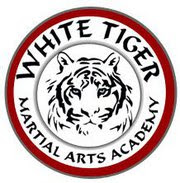GOJU KATA
5 Taikyoku
Jodan
Chudan
Gedan
Kake
Mawashi Uke
12 Main Kata
Gekisai Dai Ichi
Gekisai Dai Ni
Sanchin
Tensho
Saifa
Seiyunchin
Sepai
Shisochin
Sanseiru
Kururunfa
Seisan
Suparinpei
Gekisai - Dai Ichi and Ni
means "attack and destroy".
created around 1940 by Chojun Miyagi and Nagamine Shoshin as beginners' kata, to introduce the basic forms of karate (kihon) to help bring about the standardization of karate, and to teach a basic set of techniques for self-defense.
Gekisai kata were strongly influenced by the Shuri-te techniques that Miyagi learned from Anko Itosu
Students first learn gekisai dai ichi and then gekisai dai ni.
The main difference between dai ichi and dai ni is that dai ni introduces open handed techniques and new stances.
It is in gekesai dai ni that students are introduced to the neko ashi dachi stance, and to the wheel block (mawashi uke)
Saifa
means "smash and tear" or "smash and destroy".
Saifa has its origins in China, and was brought to Okinawa by Higashionna.
It contains quick whipping motions, hammerfists, and back fist strike
it particularly emphasizes moving off-line from an opponent's main force, while simultaneously closing distance and exploding through them.
This is usually the first advanced kata the students learn in most Gōjū-ryū dojos after gekisai dai ichi and gekisai dai ni.
Sanchin
means "three battles".
sort of moving meditation, whose purpose is to unify the mind, body and spirit.
The techniques are performed very slowly so that the student masters precise movements, breathing, stance/posture, internal strength, and stability of both mind and body.
the foundation for all other kata,
generally considered to be the most important kata to master.
When new students came to Miyagi, he would often train them for three to five years before introducing them to sanchin. He would make them train very hard, and many of them quit before learning sanchin. Those that remained would focus almost exclusively on sanchin for two to three years. Miyagi's sanchin training was very harsh, and students would often leave practice with bruises from him checking their stance.
Tensho
means "revolving hands".
Like sanchin, tensho is a form of moving meditation
tensho combines hard dynamic tension with soft flowing hand movements, and concentrates strength in the tanden.
Tensho can be considered the ju (soft) counterpart of the sanchin's go (hard) style.
Seiunchin
attack, conquer, suppress
also referred to as "to control and pull into battle"
demonstrates the use of techniques to unbalance, throw and grapple,
contains close-quartered striking, sweeps, take-downs and throws
Kururunfa
holding on long and striking suddenly
based on the Chinese praying mantis style.
(similarity to Chum Kil in Wing Chun)
Shisochin
to "destroy in four directions"
or "fight in four directions"
integrates powerful linear attacks (shotei zuki) and circular movements and blocks.
It was the favorite kata of the late Miyagi.
Seisan
13 Hands
one of the oldest kata
widely practiced among other Naha-te schools.
to "destroy in four directions"
or "fight in four directions"
integrates powerful linear attacks (shotei zuki) and circular movements and blocks.
It was the favorite kata of the late Miyagi.
Seisan
13 Hands
one of the oldest kata
widely practiced among other Naha-te schools.
Seipai
18 hands
incorporates both the four directional movements and 45° angular attacks and implements techniques for both long distance and close quarter combat.
Sanseirū
36 hands
teaches how to move around the opponent in close quarters fights, and emphasizes the destruction of the opponent's mobility by means of kansetsu geri.
Suparimpei
108 Hands
the most advanced Gōjū-ryū kata.
Initially it had three levels to master (go, chu, and jo). Later, Miyagi left only one, the highest, "jo" level.
Morio Higaonna's specialty kata
